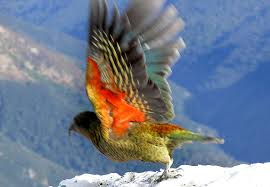Exploring the Fascinating World of Kea Parrots

Introduction
The Kea (Nestor notabilis), a large parrot known for its intelligence and playful behavior, has become a symbol of New Zealand’s unique wildlife. These delightful birds are not only notable for their distinct green and orange coloring but also for their remarkable problem-solving skills. Understanding the Kea is crucial as it faces various threats to its existence due to habitat loss and human interactions.
Unique Characteristics of Kea
Kea are primarily found in the South Island of New Zealand, particularly among the mountainous regions and forests. These birds are nocturnal and are known for their inquisitive nature, often exploring their environment and interacting with humans and other animals. Their social structure involves living in flocks which aid them in foraging and play, which plays a significant role in their development and learning.
Intelligence and Play
Kea are renowned for their impressive cognitive abilities, exhibiting behaviors such as tool use and innovative play. Researchers have observed them using natural items to unlock food sources, showcasing their adaptability. Furthermore, their playful attitude often leads them to be viewed as mischievous, which can result in damaging property and equipment when around humans.
Conservation Efforts
Unfortunately, the population of Keas has been decreasing, prompting several conservation initiatives. Organizations like the Kea Conservation Trust are dedicated to monitoring the population, researching their habits, and educating the public about their plight. The decline is largely attributed to predation by introduced species, habitat degradation, and misconceptions about their behavior leading to misguided extermination attempts.
Legislation and Habitat Protection
In response to the dwindling numbers, the New Zealand government has implemented protective legislation and funded research on Keas. Recent efforts involve predator control programs and habitat restoration projects that aim to provide a safer environment for these parrots. Engaging the local communities in these conservation efforts has also proven critical, fostering a sense of responsibility and care for Keas.
Conclusion
The Kea parrot holds a vital place in New Zealand’s ecosystem and cultural identity. As unique and charismatic creatures, they continue to garner interest from researchers, conservationists, and wildlife enthusiasts alike. Ongoing efforts to protect their habitat and raise awareness about their conservation are essential for ensuring that future generations enjoy the wondrous presence of the Kea in the wild. Their survival hinges on our commitment to coexist harmoniously with nature.









